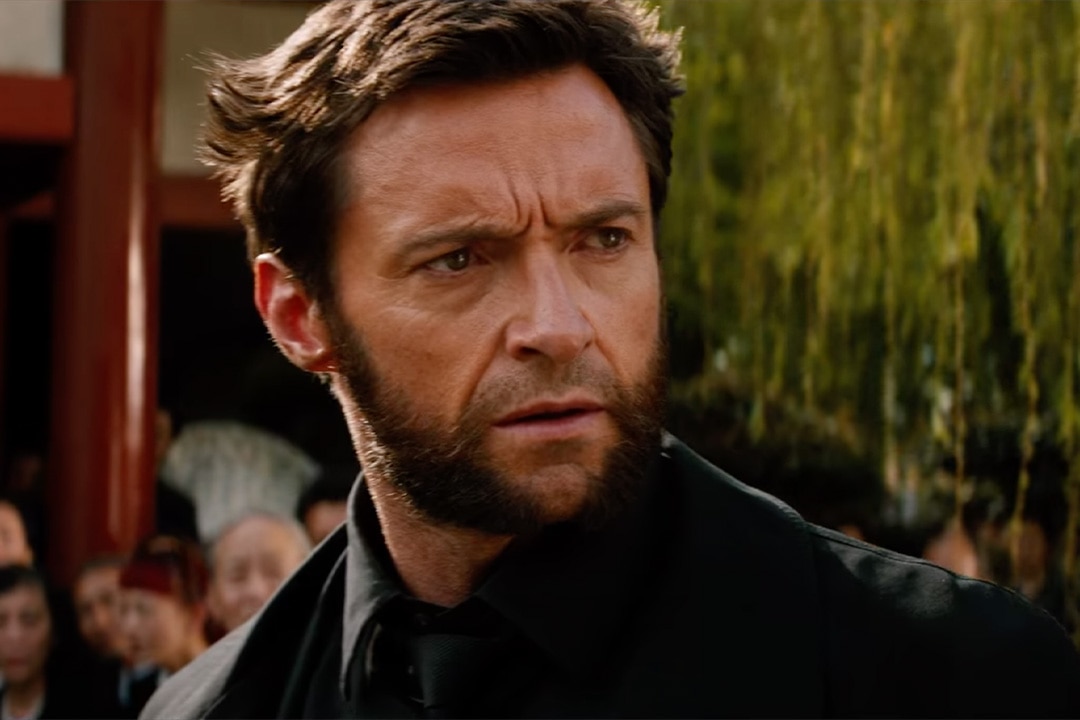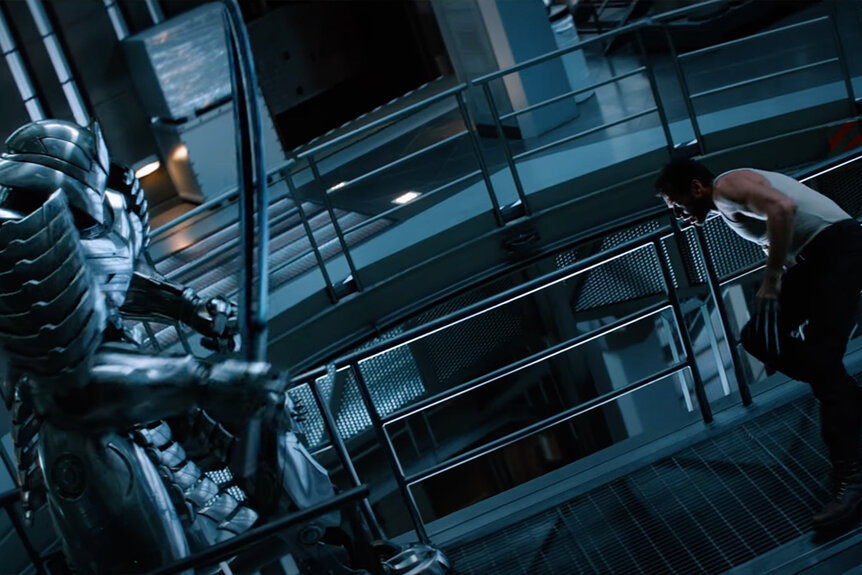Create a free profile to get unlimited access to exclusive videos, sweepstakes, and more!
'The Wolverine' turns 10: Crew reflects on Logan's Japanese odyssey & X-Men canon gaps
Stream The Wolverine right now on Peacock.

In the early 1980s, writer Chris Claremont and artist Frank Miller joined their immense comic book forces for Wolverine's first solo adventure, which took the mutton-chopped mutant to the ancient shores of Japan.
Three decades after its initial publication, the storyline loosely made its way to the big screen in The Wolverine (now streaming on Peacock), which — along with X-Men: First Class — helped reinvigorate the public's interest in the Fox franchise after the critical disappointments of X-Men: The Last Stand and X-Men Origins: Wolverine.
The studio ended up choosing James Mangold (no stranger to character or action following his work on Walk the Line, 3:10 to Yuma, and Knight and Day) to helm Hugh Jackman's second standalone adventure as James "Logan" Howlett. Chatting with SYFY WIRE over Zoom, The Wolverine cinematographer Ross Emery states that Mangold wanted to deviate "from the traditional, Bryan Singer X-Men world. We were taking the character into a new environment and also placing the character into a much less superhero kind of situation."
RELATED: Hugh Jackman says he never used steroids to play Wolverine; reveals 'Deadpool 3' timeline
The script credited to Mark Bomback and Scott Frank takes place in the aftermath of The Last Stand. Haunted by his necessary murder of Jean Grey (Famke Janssen), Logan finds himself summoned to Japan to pay his last respects to Ichirō Yashida (Hal Yamanouchi), a man he saved from the atomic blast over Nagasaki in the waning days of World War II. While on his visit abroad, the grizzled X-Man finds himself caught up in a conspiracy involving a corrupt justice system, the yakuza, and a dastardly plot to steal his immortality.
"The concept of a gritty Wolverine road movie through Japan was such an inspired concept," production designer François Audouy tells us over email. "I could imagine how the job would give me an opportunity for a deep dive into so many facets of Japanese culture. The nuance and uniqueness of that subject matter was both an invigorating and terrifying challenge."
Wanting an aesthetic that blended influences from both West and East, Mangold referenced everything from classic Westerns (Emery cites The Outlaw Josey Wales as one of the major touchstones) and the cinema of legendary Japanese filmmakers like Akira Kurosawa (Throne of Blood) and Yasujirō Ozu (Floating Weeds). "It’s like a samurai [film]," Emery explains, adding that "it was really exciting to not just do a rubber stamp X-Men Marvel film and really add another layer to the storytelling."
"Jim had cut together a rapid-fire sizzle real of evocative imagery: a yakuza mobster, an extreme closeup of a sweating eye, a rain-slicked Shinjuku alley, blood-stained katanas in mid-swing," Audouy remembers. "I got the sense that Jim was not just looking to me to create handsome backdrops, but was also looking for a world that would elevate the emotional subtext of the story."
Thankfully, the production received a few extra months of prep time once Jackman signed on to play Jean Valjean in Tom Hooper's big screen translation of Les Misérables. "For months, it was Jim writing and a tiny art team researching and sketching...feeding Jim with nuanced details to fold into his pages," Audouy continues.
Mostly filmed in Sydney and Japan, The Wolverine required — and this should come as a surprise to no one — a ton of VFX work. "When you’re dealing with a guy who has claws popping out of his hands all the time, visual effects is a constant," Emery says, pointing to one of the film's most elaborate action set pieces in which Logan takes on a bunch of yakuza thugs atop a speeding bullet train.
"We worked that very hard because we wanted to make sure that the visual effects could do the best job possible," notes the DP, revealing that the background plates (later added to the green-screen footage of the actors) were filmed with a Google Street View-type vehicle equipped with a 360-degree camera. "The second unit spent a couple days riving up and down Tokyo freeways, capturing as much of that real environment as possible, which meant that visual effects didn’t have to build too much stuff."
The climactic battle with the Silver Samurai near the end of the film also posed a major undertaking for the cinematography and visual effects departments.
"We worked a lot on a lighting plan in that building that would show the Silver Samurai in the best possible way," Emery explains. "And the fact that it’s all made from the metal that reflects any light, it becomes its own great moving object. As it moves, different colors of light reflect off the metal. [That just makes] it much more real and interesting to see it interact with Wolverine."
Audouy, meanwhile, concerned himself with the practical sets, including the lavish Yashida family compound, which he describes as "a sprawling U-shaped modernist compound inspired by the Kyoto State Guest House. The buildings surrounded a lush central garden that featured a koi pond and I even put plastic koi fish into the deep end of the pond, suspended by tiny cables. Weeks later, I had crew members who only learned that the fish were fake after hours of trying to feed them."
The Wolverine opened in theaters everywhere on July 26, 2013 and grossed over $414 million worldwide. In addition, the film effectively set the stage for Days of Future Past, which would bow the following summer, with a mid-credits scene teasing the Sentinel threat posed by Trask Industries and an unexpected team-up between longtime rivals, Charles Xavier (Patrick Stewart) and Magneto (Ian McKellen).
Mangold and Emery shot the tag — along with a number of The Wolverine pickups — in Montreal where Jackman was in the middle of production on the next X-Men film. Assuming that Professor X's ability to freeze a crowd with his mind would require extensive special effects work, Emery learned a neat trick from director Bryan Singer and his longtime cinematographer, Newton Thomas Sigel.
"We were like, ‘Well, what’s the best way to do this? Is it all visual effects or do you shoot people against green-screens?’ They said, ‘No, you just employ mimes. You just try and find as many mimes as you can,'" Emery remembers. "All of the foreground people are actually professional mime artists ... It’s as simple as that."
RELATED: How does Hugh Jackman bulk up to play Wolverine? It takes more than 8,000 calories a day
The DP also remembers getting into a friendly disagreement about Logan's bone claws showing up in the mid-credits stinger. Emery says he argued that the character would have restored his Adamantium skeleton to its former glory before leaving Japan since Wolverine's metal claws are featured in the dystopian timeline of Days of Future Past.
"There’s a bit of a gap in the canon of when he got the Adamantium claws back," Emery says. "But I argued with them and said to James, ‘You should do a version where he pulls out the Adamantium claws because we don’t know what’s gonna happen in Days of Future Past.’ I lost and they did the bone claws, but I still to this day think they should have been Adamantium claws."
The Wolverine is now streaming on Peacock.


























